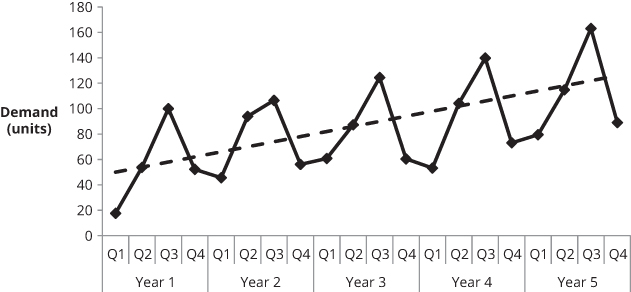CHAPTER 2How Your Software Finds Patterns in Past Demand Data
2.1 INTRODUCTION
The algorithms embodied in forecasting software are designed to identify and measure patterns in past data. The computer then makes forecasts assuming that these past patterns will continue into the future. Depending on the forecasting method used, the computer can search for two main types of patterns:
- Patterns in the sales history – these may include features such as trends or seasonal patterns;
- Relationships between sales and other factors – for example, sales may be related to the previous month's advertising expenditure or the product's current price.
In this chapter, we'll first look at the types of patterns that are commonly found in sales histories. Then we'll discuss how relationships between sales and the factors that might influence them can be revealed.
2.2 KEY FEATURES OF SALES HISTORIES
No matter how sophisticated the software you are using is, it's always a good idea to study a graph of your data to get a feel for what is going on. This can also enable you to carry out a sanity check on any results that the computer might produce. All good forecasting software products provide graphs of sales histories. Figure 2.1 is typical, depicting the quarterly sales of a product over five years. The pattern we see can be broken down into a three main components.

Figure 2.1 Demand history with ...
Get Profit From Your Forecasting Software now with the O’Reilly learning platform.
O’Reilly members experience books, live events, courses curated by job role, and more from O’Reilly and nearly 200 top publishers.

